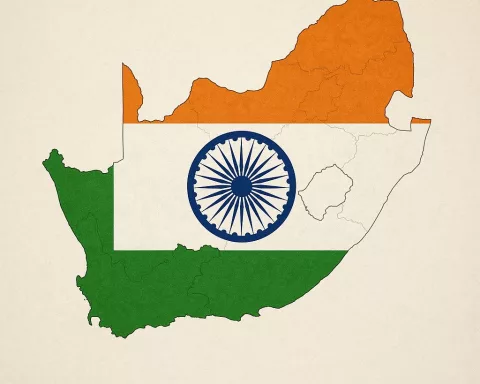Semigration in South Africa is the movement of people within the country, seeking better lives and opportunities. Recently, many families have been leaving Cape Town, known for its stunning views, due to rising living costs and moving to more affordable places like Johannesburg and the Eastern Cape. In Johannesburg, they find good jobs and lower housing prices, while smaller towns along the coast, like Plettenberg Bay, offer a peaceful lifestyle with a strong community feel. Families are embracing these new areas, balancing their dreams with practical living conditions and creating a vibrant tapestry of stories across the country.
What is semigration in South Africa?
Semigration refers to the internal movement of individuals and families within South Africa, seeking improved opportunities and lifestyles. Recent trends highlight shifts from traditional destinations like Cape Town to more affordable regions, including Johannesburg and the Eastern Cape, reflecting changing socio-economic realities.
The Evolution of Internal Migration
Over the past decade, semigration has emerged as a significant narrative in South Africa’s dynamic social landscape. This term, describing the internal movement of individuals and families seeking better opportunities and an improved lifestyle, mirrors the country’s evolving socio-economic realities. Traditionally, the Western Cape, particularly the scenic and vibrant city of Cape Town, has been the primary magnet for these internal migrants. However, recent trends indicate a shift in this pattern, adding a new dimension to South Africa’s internal migration story.
Cape Town’s allure has been almost magnetic. Nestled between the iconic Table Mountain and the vast Atlantic Ocean, the city offers a lifestyle many dream of. Its unique blend of natural beauty, cultural richness, and cosmopolitan ambiance has made it a prime destination for semigrants over the years. Yet, as the saying goes, not all that glitters is gold. The city’s rising cost of living, escalating property prices, and a notable shortage of schools have started to diminish its appeal. For many families, the dream of living in Cape Town is becoming increasingly unaffordable, prompting them to reconsider their options.
Take, for instance, the Mkhize family. They relocated to Cape Town five years ago, lured by the promise of a better lifestyle and superior educational opportunities for their children. Initially, the family enjoyed all that the city had to offer. The children excelled in school, and family weekends were filled with explorations of the city’s numerous attractions. However, as property prices soared and day-to-day expenses increased, the family found themselves financially overstretched. Eventually, they decided to move back to Johannesburg, where Mr. Mkhize’s company was headquartered. In Johannesburg, they discovered a more affordable cost of living, ample schooling options, and proximity to robust economic opportunities.
Johannesburg: The Economic Heartbeat
Johannesburg, South Africa’s economic powerhouse, has seen a surprising return of professionals and families. With companies shifting back to in-office work, it has become practical for many to live closer to business districts. Despite its reputation as a bustling metropolis, Johannesburg offers a relatively lower cost of living compared to Cape Town. The city provides affordable housing options and access to world-class amenities, making it an attractive proposition for those looking for career advancement and a comfortable lifestyle. The migration back to Gauteng underscores the enduring appeal of economic stability and affordability.
Beyond the urban sprawl of Johannesburg, several smaller coastal towns have emerged as new havens for semigrants. Towns along the Garden Route, such as Knysna and Plettenberg Bay, have seen a steady influx of new residents. These towns offer a tranquil lifestyle, well-developed infrastructure, and increasing business opportunities. The Garden Route’s natural beauty, combined with its relaxed pace of life, provides an ideal balance between affordability and quality of life. For many, these towns represent a middle ground, offering the best of both worlds without the pressures of larger urban centers.
Consider the Naidoo family, who moved from Durban to Plettenberg Bay. They sought a slower pace of life and a better work-life balance. Mr. Naidoo, a tech entrepreneur, found the town’s growing digital infrastructure beneficial for his remote work. Meanwhile, the family enjoyed the outdoor activities and the tight-knit community feel. Their move captures the growing trend of seeking smaller, yet well-connected towns that offer a holistic lifestyle.
The Eastern Cape’s Rising Appeal
Another region gaining traction among semigrants is the Eastern Cape. Urban areas such as Gqeberha (formerly Port Elizabeth) and St Francis Bay are becoming increasingly attractive. These areas have seen substantial investments in infrastructure and development projects, enhancing their appeal. The affordability of property in the Eastern Cape, compared to the Western Cape, is a significant draw. Families and professionals find these areas offer a viable alternative, balancing cost with quality living standards.
In Gqeberha, the Hendricks family’s story reflects this trend. They moved from Cape Town, driven by the rising costs. In their new home, they discovered a vibrant community, excellent schooling options, and a growing local economy. The family found their money stretched further, allowing them to enjoy a higher standard of living without the financial strain they experienced in Cape Town.
A Diverse Semigration Landscape
South Africa’s semigration landscape is becoming increasingly diverse. Various factors such as economic conditions, lifestyle preferences, and affordability shape these internal migration patterns. While the Western Cape retains its allure, the rising costs have driven many to explore alternative locations. Gauteng’s economic opportunities, combined with its more affordable living expenses, make it a compelling choice for many. Simultaneously, smaller coastal towns and the Eastern Cape offer attractive alternatives, blending affordability with a high quality of life.
This evolving trend paints a richer, more varied picture of internal migration in South Africa. Each family’s story adds a unique thread to this narrative, highlighting the nation’s adaptability and resilience. The shifting semigration trends underscore a broader socio-economic recalibration, reflecting a society constantly in pursuit of a better balance between dreams and reality.
FAQ: The Changing Semigration Landscape in South Africa
What is semigration in South Africa?
Semigration refers to the internal movement of individuals and families within South Africa, seeking improved opportunities and lifestyles. Recent trends show a shift from traditional destinations like Cape Town to more affordable regions, such as Johannesburg and the Eastern Cape. This reflects changing socio-economic realities in the country.
Why are families leaving Cape Town?
Many families are leaving Cape Town due to rising living costs, escalating property prices, and a shortage of schools. While Cape Town offers stunning views and a vibrant lifestyle, the increasing financial strain has made it an increasingly unaffordable option for many, prompting them to seek more affordable living conditions elsewhere.
What are the benefits of relocating to Johannesburg?
Johannesburg is known as South Africa’s economic powerhouse. It offers a relatively lower cost of living compared to Cape Town, with affordable housing options and access to world-class amenities. The city is appealing for those seeking career advancement, especially as companies shift back to in-office work, making proximity to business districts practical.
How are smaller coastal towns like Plettenberg Bay and Knysna attracting new residents?
Smaller coastal towns along the Garden Route, such as Plettenberg Bay and Knysna, are attracting residents due to their tranquil lifestyles, well-developed infrastructure, and growing business opportunities. These towns offer a peaceful lifestyle with a strong community feel, providing a middle ground between affordability and quality of life away from the pressures of larger urban centers.
Why is the Eastern Cape becoming a popular choice for semigrants?
The Eastern Cape is gaining traction due to substantial investments in infrastructure and development projects, making urban areas like Gqeberha (formerly Port Elizabeth) and St Francis Bay increasingly attractive. The affordability of property in the Eastern Cape, compared to the Western Cape, draws families and professionals looking for a viable alternative that balances cost with quality living standards.
How does the semigration trend reflect broader socio-economic changes in South Africa?
The evolving semigration landscape highlights a broader socio-economic recalibration in South Africa. Families are adapting to changing economic conditions and lifestyle preferences, leading to a more diverse internal migration pattern. While the allure of the Western Cape remains, rising costs prompt many to explore Gauteng’s economic opportunities or the affordability of smaller coastal towns and the Eastern Cape, showcasing the country’s resilience and adaptability in pursuit of a better quality of life.












